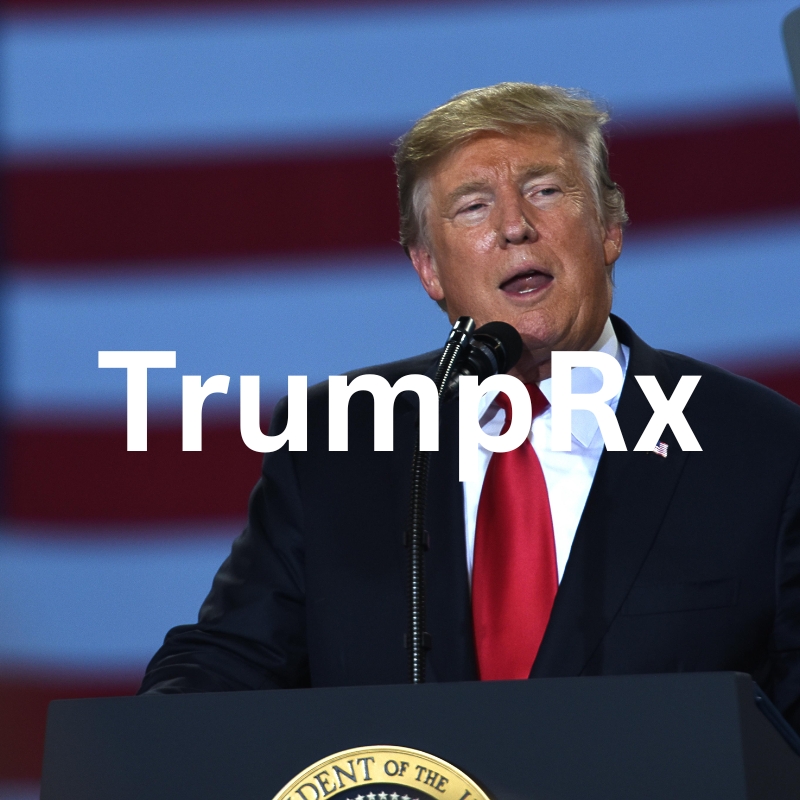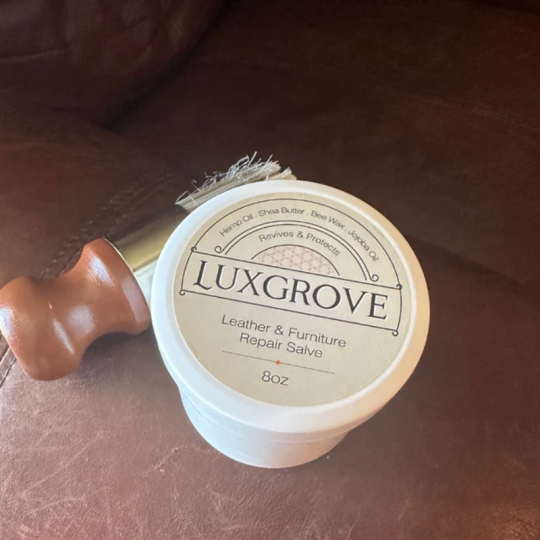Experience significant savings on prescription medications with TrumpRx, a revolutionary platform designed to connect you directly to pharmaceutical manufacturers. Enjoy discounts of 50-85% on essential drugs, including Pfizer's widely used treatments. TrumpRx simplifies your healthcare journey by redirecting you to trusted manufacturers for hassle-free purchases. Ideal for Medicaid patients and all Americans, this user-friendly website empowers you to find the best prices without the complexities of insurance. Choose TrumpRx for transparent pricing, accessible medications, and a commitment to reducing healthcare costs—because everyone deserves affordable health solutions. Start saving today and take control of your prescription needs!
Description
“This is a really big announcement … something most people said was not doable.”
—Donald Trump, on unveiling TrumpRx
When Donald Trump announced TrumpRx, his plan to launch a government-operated website that helps Americans access prescription drugs at steeply discounted prices, it grabbed headlines—and raised many questions. What exactly is TrumpRx? How would it work? Would it meaningfully reduce drug costs? And what are the political, legal, and economic implications?
In this post, I’ll walk through:
-
What TrumpRx is (including the Pfizer deal and structure)
-
The policy and economic rationale (and comparisons)
-
Key challenges, criticisms, and operational issues
-
Implications for various stakeholders
-
My assessment + risks to watch
-
Suggested questions for further study
1. What Is TrumpRx? Structure, Mechanism & The Pfizer Deal
Basic Outline
-
TrumpRx is planned to be a federal government–operated website, launching in early 2026.
-
Important: The government will not itself sell or distribute medications. Instead, the site will allow consumers to search for their prescriptions and then redirect them to the manufacturers’ own direct-to-consumer purchasing sites.
-
The aim: cut out insurance middlemen, opaque rebates, and other pricing markups, by negotiating “most favored nation” style pricing and encouraging direct sales.
-
The plan also applies to Medicaid patients (i.e. government insurance) but would be open to all Americans, insured or uninsured.
Thus, TrumpRx is not a pharmacy or distributor; it’s a comparison / redirection platform, akin to a marketplace or portal. Consumers click through to a manufacturer’s site to actually purchase.
The Pfizer Deal
A central selling point in the announcement is the deal with Pfizer, which agreed to price many of its drugs at 50–85% discounts via the TrumpRx mechanism. Key features:
-
These discounts apply to a “large majority” of Pfizer’s primary care medicines and specialty drugs.
-
Examples given:
-
Duavee (menopause drug): $30 (≈ 85% off)
-
Toviaz (overactive bladder): $42 (85% off)
-
Eucrisa (for eczema / atopic dermatitis): $162 (≈ 80% off)
-
Xeljanz (rheumatoid arthritis): reduced from ~$6,000/month to ~$3,600 (≈ 40% off)
-
-
The plan also states: all new Pfizer drugs launched in the U.S. would also be sold at the lower TrumpRx prices.
-
In return, Pfizer will be granted a 3-year grace period on planned Trump-admin tariffs on imported drugs, and in parallel the company pledged ~$70 billion in R&D and domestic manufacturing investments.
In short: Pfizer gives deep discounts for drugs under TrumpRx; the government gives tariff relief + a commitment to buy under favorable terms + a public platform to promote these deals.
Pricing Model: “Most Favored Nation” & Net Price Comparisons
One of the core conceptual pillars is applying a “most favored nation” (MFN) approach to drug pricing:
-
The U.S. government will tie the prices Americans pay (net price) to the lowest price paid in other rich nations (Canada, France, Germany, U.K., etc.).
-
Importantly, the baseline is net price (after rebates, discounts) rather than list price.
-
The idea: the U.S. will no longer subsidize artificially high U.S. prices relative to what other countries pay. “The United States is done subsidizing the health care of the rest of the world,” Trump said.
-
The administration acknowledges that implementing MFN pricing might drive up prices in other countries (to avoid giving the U.S. an advantage), but says that is acceptable.
Beyond Pfizer, the administration says it is in talks with other manufacturers, and more deals could follow.
Historical & Political Context
-
Trump had attempted an MFN-type pricing reform in his first term (via executive order). That effort was blocked in court.
-
The current TrumpRx proposal is a new iteration of that broad goal: reduce U.S. drug costs by aligning with global pricing benchmarks.
-
Also, pharmaceutical industry has long resisted direct pricing mandates and foreign price linking, warning of reduced innovation and market distortions.
2. Policy Rationale, Economic Appeal & Comparative Models
Before diving into critiques, let’s outline why TrumpRx is appealing (to its backers) and how it fits into broader drug-pricing reform strategies.
Why This Proposal Is Attractive
-
Simplicity & Popular Appeal
-
People hate opaque drug pricing. A website where you see the discounted price and click through sounds clean, direct, and consumer-oriented.
-
Politically, it offers a high-visibility “action” to campaign on: Trump can claim he’s delivering real price cuts.
-
-
Bypass Insurers & PBMs
-
One of the criticisms of U.S. drug markets is the complex rebate system, pharmacy benefit managers (PBMs), and middlemen that obscure actual net prices.
-
Direct-to-consumer pathways could cut out some of that complexity, reduce markups, and show actual savings.
-
-
Leverage Big Pharma Deals
-
If you can get one or more major manufacturers (like Pfizer) to commit to steep discounts, you gain credibility and precedent.
-
These deals also serve as signaling and bargaining tools against other manufacturers.
-
-
Global Price Alignment
-
The MFN approach tries to exploit price differences across countries: if one country pays less, the U.S. should too.
-
It pushes against the longstanding U.S. norm of much higher drug prices.
-
Comparisons to Other Models & Reforms
-
Medicare Drug Price Negotiation
Many policy proposals focus on giving Medicare (or the federal government) authority to negotiate lower drug prices for coverage. Trump critics say TrumpRx sidesteps or duplicates that by relying on manufacturer direct sales rather than insurance negotiation. -
International Reference Pricing
Other countries sometimes set national drug prices based on what peer countries pay. TrumpRx’s “most favored nation” is a variant of that approach, but typically governments set the price; here, the U.S. is using it as a benchmark to pressure manufacturers. -
State-Level Drug Importation
Some U.S. states have considered importing drugs from Canada or other countries. That option is logistically and legally complicated—TrumpRx is a different path, focused on negotiating and redirecting domestic purchase behavior. -
Manufacturer Direct Programs
Some drugmakers already run direct-to-consumer pharmacies (e.g. Novo Nordisk’s NovoCare, which sells Ozempic directly for $499/month for cash payers) as efforts to simplify pricing and access.
TrumpRx amplifies that model at the federal platform level.
So TrumpRx sits at the intersection of consumer portals, price benchmarking, and direct-to-consumer sales.
Key Challenges, Criticisms & Practical Obstacles
It’s not enough to have a good-sounding idea. TrumpRx faces numerous structural, legal, economic, and operational obstacles. Many of them have been raised by analysts, academics, and industry watchers. Let’s unpack.
Insurance & Payer System Conflict
-
Most Americans use insurance / third-party payers. A central criticism is that the TrumpRx approach may benefit cash-paying consumers rather than those buying through insurance. Drew Altman (KFF) and others note:
“Most Americans buy drugs through their insurance plan, so that would mainly help the uninsured.”
-
The plan does not clearly state whether prescriptions purchased via TrumpRx can be billed to or reimbursed by insurance. That matters enormously for adoption.
-
If consumers must always pay out-of-pocket (then maybe get reimbursed), many will stick to their existing pharmacy + insurance channels, limiting uptake.
Limited Scope (One Company, One Program)
-
Right now, the Pfizer deal is essentially the flagship. But it covers only one manufacturer and one specific program.
-
Critics say that as structured, it will help a limited set of drugs and a limited population.
-
If other large manufacturers refuse to participate or negotiate, overall impact will be muted.
Feasibility & Legal Authority
-
Does the president (or executive branch) have the authority to impose MFN pricing on private pharma companies? Many commentators question this.
-
Trump’s prior attempt at an MFN executive order was blocked in court.
-
There may be legal challenges from pharmaceutical companies, states, regulatory bodies, or industry groups.
Economic Incentives, Innovation & International Spillovers
-
If the U.S. forces deeper cuts for blockbuster drugs, pharma may reduce investment in new drug development, especially in high-risk areas.
-
Pharma may respond by raising prices in other countries (to avoid giving U.S. advantages) or refusing to launch in markets where yields are lower.
-
The announcement acknowledges this possibility: Trump said he expects drug prices to rise elsewhere.
-
There's the question of whether the discounts (e.g. reducing Xeljanz from $6,000 to $3,600) are meaningful or still high. Critics argue that even the discounted price may remain burdensome.
Administrative & Operational Complexity
-
Building and maintaining such a platform is nontrivial—especially ensuring accurate pricing, reliable redirections, consumer support, dispute resolution, etc.
-
Ensuring security, data privacy, fraud prevention, and regulatory compliance (FDA, HIPAA, etc.) is a major undertaking.
-
Synchronizing with multiple manufacturers (each with their own e-commerce, shipping, regulatory protocols) could introduce friction, delays, or mismatches.
Public Perception & Marketing
-
Consumers are used to going to pharmacies or using insurance networks; getting people to change behavior is hard.
-
Some may distrust a government-run portal or assume hidden tradeoffs.
Drug Selection & Volume Risk
-
If the portal mainly features niche or specialty drugs that are not widely used (as some critics already note), the perceived benefit for “average” Americans may be low.
-
Success depends on achieving volume—both in terms of drugs covered and the number of users. Otherwise the negotiation leverage is weak.
Unintended Consequences & Cost Shifting
-
If insurance plans lose leverage (because consumers bypass them), they may raise premiums or restrict coverage in response.
-
If tariffs or protectionist measures accompany the policy, overall costs for some drugs might increase.
-
Counterbalancing policies (e.g. insulating innovation, managing generics, trade relations) must be carefully calibrated.
In sum: the concept is bold, but the devil is in the details—and many of those details remain vague or untested in TrumpRx’s current form.
Implications & Stakeholder Effects
TrumpRx, if implemented, would ripple across many parts of the U.S. healthcare and pharmaceutical landscape. Let’s explore how different players might be affected.
Patients & Consumers
Potential Benefits:
-
Lower cash prices for some drug prescriptions, especially for those without good insurance.
-
Greater price transparency (you see what you’ll pay).
-
Ability to pick among direct manufacturer offers rather than being constrained by insurers or pharmacy networks.
Potential Risks:
-
If insurance reimbursement is disallowed or difficult, many insured patients may not benefit.
-
For drugs not included under participating manufacturers, no support.
-
Confusion about whether prescription or usage patterns must shift to reap benefits.
-
Behavioral inertia: many won’t switch from their familiar pharmacy or insurance arrangement.
Insurance Companies & PBMs (Pharmacy Benefit Managers)
-
May see reduced control: fewer people may rely on insurer-negotiated drug benefits.
-
They might fight back—by limiting formularies, imposing higher co-pays, or adjusting premiums.
-
They might seek to integrate or partner with TrumpRx to preserve a role.
Pharmaceutical Companies (Non-Pfizer & Pfizer)
-
Pfizer stands to gain immediate market goodwill, favorable term concessions, and public perception.
-
Other manufacturers will be under pressure to follow suit—or risk being portrayed as unfair or resisting access.
-
Pharma could respond by:
-
Withholding participation
-
Threatening legal action
-
Adjusting pricing globally to counter U.S. MFN demands
-
Slowing novel drug development or shifting R&D away from costly domains
-
Introducing more aggressive patenting, licensing contracts, or captive pipelines
-
U.S. Federal Government & Regulators
-
The administration would take on new responsibilities: oversight, platform maintenance, dispute resolution, monitoring manufacturer compliance, rulemaking, and enforcement.
-
Legal entanglements are likely, with lawsuits from industry, states, or trade partners.
-
The government will need to coordinate regulatory, trade, healthcare, and legislative levers.
-
There’s a political brand risk: if TrumpRx fails or underdelivers, critics will seize on it.
Other Countries & Trade Partners
-
As U.S. forces price alignment, pharma may push harder in foreign jurisdictions to preserve margins (i.e., raising prices abroad). That may stir diplomatic tensions or trade disputes.
-
Countries currently benefiting from U.S. “cross-subsidies” might feel pressure as pharma tries to rebalance global price structures.
Healthcare Ecosystem & Innovation
-
A successful TrumpRx could shift the landscape toward more direct-to-consumer drug sales and less reliance on intermediaries, pushing industry innovation in distribution, pricing, and access.
-
If drug margins shrink, pharma may reprioritize R&D investment—favoring incremental modifications, biologics, or less risky domains over high-risk, high-cost breakthroughs.
My Assessment & Key Risks to Monitor
After analyzing the structure, rationale, and criticisms, here’s what I believe:
Likely Outcomes
-
The Pfizer deal is real and represents a credible commitment—but its scope is limited.
-
TrumpRx will likely launch in some modest form in early 2026, but the impact in the first years will be constrained by limited manufacturer participation, restricted drug lists, and adoption challenges.
-
To scale, the administration must secure cooperation from multiple big pharma firms, resolve reimbursement issues, and manage legal/regulatory pushbacks.
-
Over time, TrumpRx (or similar portals) may shift consumer expectations about price transparency and direct sales, nudging more pharma companies to offer direct-to-consumer options.
Major Risks & Wildcards
-
Legal/Constitutional Roadblocks
If courts block or restrict executive moves like MFN pricing or federal coercion of drug pricing, the platform could be hamstrung. -
Lack of Insurance Integration
If insured patients can’t use their coverage on TrumpRx purchases, adoption among the majority will lag. -
Pharma Resistance
Major drug companies may refuse or negotiate weakly. If key drug classes are excluded, effectiveness is limited. -
Innovation Retrenchment
Ongoing profitability challenges could lead pharma to cut back on the development of risky, novel drug classes or rare disease therapies. -
Price Shifts Abroad / Trade Retaliation
Pharma may push back globally. Countries may resist price increases or renegotiate terms, leading to trade disputes. -
Implementation Failures
Technical glitches, data errors, mismatches, consumer confusion, or security breaches could undermine trust. -
Perception vs. Reality Gap
If the public perceives TrumpRx as mostly symbolic or PR rather than substantive, political capital could suffer.
What Success Would Look Like
-
Multiple major pharma companies (beyond Pfizer) commit to deep discounts under TrumpRx.
-
Consumers begin migrating to it, especially for chronic medications, because it’s cost-competitive and seamless.
-
Insurance systems evolve to integrate or support TrumpRx purchases.
-
Drug price inflation slows; consumer spending on drugs declines.
-
The platform remains legally intact and withstands court challenges.
What Failure Might Look Like
-
Only a few drugs are covered; consumers don’t adopt.
-
Manufacturers refuse to join.
-
Legal challenges block or dismantle key pricing provisions.
-
Insurance systems remain disjoint from TrumpRx, limiting usage.
-
The policy becomes a political liability rather than a success story.
Suggested Questions for Further Study / Discussion
To turn this into a fruitful seminar, debate, or research project, here are some provocative questions:
-
Legal Authority & Separation of Powers
-
On what constitutional or statutory basis can the executive branch enforce MFN pricing or demand discounts from private companies?
-
What precedents exist for federal mandates on pharmaceutical pricing?
-
-
Insurance vs. Out-of-Pocket Tradeoffs
-
How many Americans would truly benefit, given current insurance structures?
-
What modifications would insurers need to adopt to support this model?
-
-
Comparative International Models
-
Which countries currently use reference pricing, MFN strategies, or direct manufacturer price setting?
-
What lessons (positive and negative) can the U.S. borrow?
-
-
Economic Incentive & R&D Balance
-
How might deeper price cuts in the U.S. affect global R&D investment and innovation, especially for rare diseases?
-
At what point does a marginal reduction in profit dampen pharmaceutical risk-taking?
-
-
Platform Design & Risk Mitigation
-
What are best practices for designing a public healthcare marketplace (user interface, security, accuracy, dispute systems)?
-
How should oversight, audits, compliance, and enforcement be structured?
-
-
Equity & Access
-
Would TrumpRx disproportionately benefit certain demographics (e.g. uninsured, lower-income) over others?
-
Could it worsen disparities if insurance-insured populations don’t benefit?
-
-
Behavioral Barriers & Adoption Strategy
-
What marketing, incentives, or nudges would be necessary to shift patient and physician behavior toward using TrumpRx?
-
How to overcome trust, habit, and inertia?
-
-
Scenario Planning
-
Best-case scenario: What happens by 2030?
-
Worst-case scenario: What political or legal backlash derails the plan?
-
Mid-case: Slow adoption scaling over a decade.
-
Conclusion
TrumpRx is an ambitious, high-visibility gambit to reconfigure how Americans access prescription medications. By combining a government-run portal, “most favored nation” pricing, and direct-to-consumer redirection, the proposal tackles the most glaring frustrations of U.S. drug pricing: opacity, high costs, and middleman complexity.
But the proposal rests on many fragile assumptions:
-
That insurance systems can adapt (or be circumvented) without massive disruption
-
That multiple drugmakers will join voluntarily at deep discounts
-
That legal authority will survive challenge
-
That the public will shift behavior toward the portal
In its current form, TrumpRx is more promise than proven policy. It’s a bold experiment, and its success will depend heavily on execution, legal robustness, and the willingness of industry players to go along. In the next year or two, much will depend on how the program is fleshed out, how manufacturers respond, how courts receive it, and—critically—how well it aligns with existing insurance and regulatory systems.




